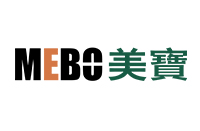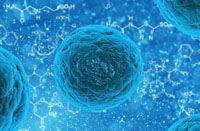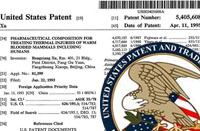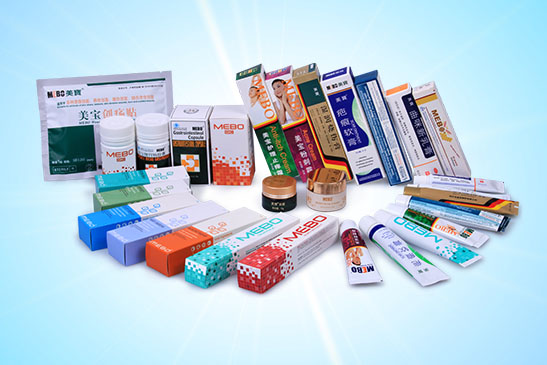Korean Doctors Used MEBO to Successfully Treat 5 Cases of Preterm Infants with Total Parenteral Nutrition Fluid Extravasation Injuries
2009年-02月-11日
来源:MEBO
The surgical doctors from the Plastic Surgery and Pediatrics Department of Women’s University College of Medicine in Korea recently posted a clinical paper on the Journal of Korean Medical Science, introducing the successful treatment using MEBO for preterm infant with total parenteral nutrition fluid extravasation injuries and remarkable therapeutic efficacy they have gained. This paper is . The Journal of Korean Medical Science was founded in 1988, which is an international, peer-reviewed, general medical journal published in English. Publisher of the journal is the Korean Academy of Medical Sciences. The abstract is as follows:
Abstract:
Patients included were preterm infants admitted from December 2003 to March 2004 in the neonatal intensive care unit of Ewha Womans University Mokdong Hospital.They were included after obtaining a signed informed consent from their parents. The procedures followed in the study were in accordance with the recognized ethical standards and with the Helsinki Declaration. The mean gestational age was31+2weeks (range 28+4 to 35+6 weeks), and the mean weight at extravasation was 1,930 g (range 1,140 to 2,680 g). Adverse events occurred within the mean of 32 days of birth (range,17 to 50 days).
Patient 1
Patient 1 was born at 29+1 weeks gestation. Thirty six days after birth, subcutaneous swelling occurred on the dorsum of the right foot from extravasation of 12.5% total parenteral nutrition (TPN) and 10% intralipid (Fig. 1A). The wound was swollen with a bluish color change and scab formation. Dressing with an ASH mixture was started after removing the scab. After 4 weeks of dressing, the wound had healed completely only leaving pigmentation (Fig. 1B). On 126 days, full thickness skin necrosis that was measured at 1×1 cm2 developed after transfusion of pack red blood cells on the dorsum of the right hand (Fig. 2A). This was managed by the same dressing. After 5 weeks of dressing, the wound had healed with a small sized contracture without functional abnormality (Fig. 2C).



Patient 2
Patient 2, born at 33+1 weeks gestation, had subcutaneous Combined Treatment for TPN Extravasation Injuries swelling on the left forearm at 18 days after birth (Fig. 3). Intravenous 12.5% TPN had been administered via a peripheral cannula in the left forearm. Within 1 hr of swelling, the wound was managed by daily dressing with an ASH mixture. Over the next few days a partial thickness skin defect developed, which measured 0.5×1 cm2 in diameter. One month later the wound had healed completely.

Patient 3
Patient 3, born at 29+6 weeks, was found with swelling, a bluish color change, and a reddish blister on the dorsum of the left foot on 42 days after birth after extravasation of 12.5% TPN solution. A pale area on the tip of the left toe was apparent but showed good capillary return (Fig. 4A). As soon as the swelling was discovered, initial treatment was started with an ASH mixture with frequent saline irrigation and elevation of the left foot. A parenteral antibiotic (first generation cephalosporin) was started, and vitamin C given intravenously mixed in the fluid as an antioxidant was increased from 50-60 mg/day to 100-120 mg/day. Over the next 2 weeks, a full thickness skin ulcer with a whitish bed developed (Fig. 4B). Nineteen days after the lesion had been managed as mentioned, debridement and wet saline dressing was done. Twenty-four days after treatment, dressing was changed to potadine gauze dressing once or twice per day. The ulcer size decreased, and after 50 days of treatment the area had healed completely with a small size contracture without functional abnormalities (Fig. 4D).


Patient 4
Patient 4, born at 28+4 weeks, had an extravasation injury from 12.5% TPN and 10% intralipid that had been infused into the lateral side of the right foot 50 days after birth (Fig.5). This injury showed swelling, an erythematous color change, and a blister of the lateral side of the right foot. As soon as the swelling was found, dressing with an ASH mixture was started. After 20 days of treatment, the wound had healed completely with a small size of contracture. At 2 yr followup, small linear scar was revealed.

Patient 5
Patient 5 was born at 35+6 weeks. Seventeen days after birth,the lateral side of the left foot was affected with extravasation of 12.5% TPN and 10% intralipid. The wound showed swelling, a whitish skin color change, and a bullae measured at 2.5×1.5 cm2, but had a good capillary refill on the tip of the toe. As soon as the swelling was found, the foot was elevated and dressing with an ASH mixture was started. Parenteral vitamin C as an antioxidant was increased to a high dose. Twenty-six days after birth an eschar composing of necrosis and desquamation measuring at 1.5×1.5 cm2 developed (Fig. 6). After escharectomy, potadine gauze dressing was done once or twice per day and, oral antibiotics (second-generation cephalosporin) were administered. After 22 days of treatment, the wound had healed leaving a small size of contracture without functional abnormality. At 20 months of follow-up, the wound had healed completely without any sequale.

Table 1. Summary of patients with extravasation injuries
Case G.P Age weight Site Treatment Wound Duration Outcome
(wks) (days) (g) by Millam (days)
1 29+1 36 1140 Dorsum of Rt. foot III subcutaneous hematoma 28 Excellent
1 29+1 126 3110 Dorsum of Rt.hand III full thickness skin ulcer 35 good
2 33+1 18 1970 Lt.forearm III partial thickness with necrosis30 Excellent
3 29+6 42 2680 Dorsum of Lt.foot III full thickness skin ulcer 50 good
4 28+4 50 2240 Lateral side of Rt.foot III partial thickness without necrosis20 good
5 35+6 17 1620 Lateral site of Lt.foot IIIfull thickness skin ulcer 22 Excellent
Partial thickness: epidermis and partial loss of dermis; Full thickness: dermis.








